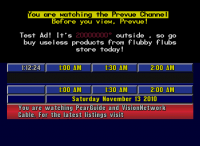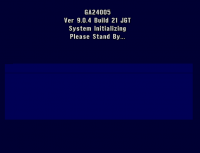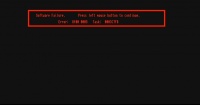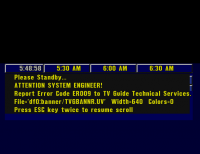Prevue (ESQ)
File:Iorjgtrt.jpgFile:Iorjgtrt.jpgFile:Iorjgtrt.jpgFile:Iorjgtrt.jpgFile:Iorjgtrt.jpgFile:Iorjgtrt.jpgFile:Iorjgtrt.jpgFile:Iorjgtrt.jpgFile:Iorjgtrt.jpgFile:Iorjgtrt.jpgFile:Iorjgtrt.jpgFile:Iorjgtrt.jpgFile:Iorjgtrt.jpgFile:Iorjgtrt.jpgFile:Iorjgtrt.jpgFile:Iorjgtrt.jpgFile:Iorjgtrt.jpgFile:Iorjgtrt.jpgFile:Iorjgtrt.jpgFile:Iorjgtrt.jpgFile:Iorjgtrt.jpgFile:Iorjgtrt.jpgFile:Iorjgtrt.jpg
File:Iorjgtrt.jpgFile:Iorjgtrt.jpgFile:Iorjgtrt.jpgFile:Iorjgtrt.jpgFile:Iorjgtrt.jpgFile:Iorjgtrt.jpgFile:Iorjgtrt.jpgFile:Iorjgtrt.jpgFile:Iorjgtrt.jpgFile:Iorjgtrt.jpgFile:Iorjgtrt.jpgFile:Iorjgtrt.jpgFile:Iorjgtrt.jpgFile:Iorjgtrt.jpgFile:Iorjgtrt.jpgFile:Iorjgtrt.jpgFile:Iorjgtrt.jpgFile:Iorjgtrt.jpgFile:Iorjgtrt.jpgFile:Iorjgtrt.jpg
YouTube clips: Blue Grid Example Emulated Blue Grid Example
Specifications
This version of the Prevue Grid software requires the following minimum specifications:
- 2.04 or 2.05 Kickstart ROM
- Chip RAM: 1.0MB
- Fast RAM: 1.0MB
- CPU: 68000
- Chipset: ECS
When running it under emulation, it's a good idea to make the window size 760x480 - this causes the image to be perfectly centered in the window. To create screenshots with the proper aspect (to simulate what you'd get from a video capture on a real Amiga), crop the 760x480 screenshots down to 740x480, then resize it using a bilinear algorithm to 640x480.
This particular Guru Meditation error is caused by insufficient chip RAM. Insufficient fast RAM will not cause a Guru Meditation, but it will cause the software to throw an ER011 error and freeze up. It is not compatible with Kickstart 3.1 - the software will boot, but there are major graphical problems. It is compatible with the AGA chipset, but requires softkicking with a 2.x ROM in order to avoid the glitches.
Operation
The software has several different modes, which are accessible through the system's menu. To access the menu, press ESC while in listings mode. The keyboard commands that are available depend on which mode the software is in. While in Diagnostic mode, any keypress that is not recognized by the software as a valid command will dump back out to the main menu.
Listings mode
Ctrl-B - this shows SCRLSPD = x to appear on the top half, showing the current scroll speed.
Ctrl-C - this causes the software to redraw the screen. This is not done cleanly - there are glitches while it happens, but it redraws the screen freshly.
Ctrl-D - this causes the scroll speed to decrease by one (making it faster). This also allows access to the "disallowed" speeds 0 and 1.
Ctrl-E - this causes the scroll speed to increase by one (making it slower). If you press Ctrl-B beforehand, the on-screen speed will change as well.
Ctrl-G - this causes the software to draw a calibration grid, useful for adjusting an attached monitor to ensure that none of the image is being cut off at the edges. If done in Listings mode, it can cause display corruption which will be repaired once the listings have a chance to cycle around. This works in Diagnostic mode too, but causes the software to erroneously begin using the listings font to draw the diagnostic menu, instead of the ad-editing font, causing text to be positioned incorrectly.
Ctrl-S - this causes the listings to switch into single-step mode. Each keypress of Ctrl-S from this point will make the listings scroll one step, then stop.
Ctrl-U - once the current "block" fully scrolls on the screen, the clock will stop and no more blocks will scroll onto the screen, parking the floppy drive and enabling a safe reboot or shutdown.
C - this causes the current color palette to be displayed on top of the listings.
F - this causes text to appear on the top half denoting some internal settings. It is currently unknown how to modify these settings.
G - this triggers graphical ad mode, which currently goes through all the banners present on the disk.
H - shows CLU (~channel) information on the top half of the screen (use ad mode (shift-A) first to see it clearly). Each press steps through the list. CTRL-H steps backwards through the list.
J - shows PI (programme information) on the top half of the screen, according to which ever CLU was just selected by pressing H. Each press steps through the list. CTRL-J steps backwards through the list.
K - tries to load clock.cmd from DF0: which fails given the disk we have (although there is a ClockCmd=1 shown on the diagnostics when pressing F)
L - switches off overscan - possibly a function when using a monitor to view the output of the Amiga.
N - this causes the top half to switch to color 0, enabling display of external video via the genlock.
P - reload gradient.ini from DF0: (use unknown)
S - this causes the listings scroll to continue.
Y - cycles the colour indexes of the 32 colour palette used on the top half. The graphics ("logos") on the disk we currently have are all in 320x240 32 colours. Adverts are actually shown on a 32 colour screen, although only 8 colors are accesible via the editor. Press it 32 times to return to the "normal" palette.
/ - this cycles through 9 "Viewmode" tests on the top half. They cycle through different resolutions and different positions (left half, right half, full screen).
Shift-A - this causes text ads to appear on the top half, and will cycle through all ads that are marked "active" through the menu.
Shift-D - this causes the software to reload its current listings from its cache stored on disk.
Shift-K - creates (in the background) a list of the logo files within DF0:logos and (seemingly) updates DF0:logo.lst
Shift-N - this causes some diagnostic text stating "BitPlane1 = 40468" to appear over the listings. Numbers seen have been 40468, 3C3A8 and 38568. Unsure as to the reason this exists.
Shift-S - this causes the listings scroll to stop.
Shift-T - this seems to have the same effect as Shift-A at the moment. It is unknown what difference there is to Shift-A.
Diagnostic mode
Shift-1 - Changes TEXT between L, S, N, and R. L most likely means Local, as setting TEXT to L is the only way to access the Edit Ads and Edit Attributes main menu items. Unsure about the others but it's possible that either S (serial) or R (RS-232) refers to feeding ads in over serial. S may also refer to Satellite (though operationally this would be the same as Serial).
Shift-2 - Changes VIN between L, I, Z, N, Y, and y. Perhaps VIN refers to Video INput? Conjecture at this point without a manual or some good old RE'ing.
Shift-3 - Changes LINE between 6, 5, 4, and 3. This controls the maximum number of text lines per ad.
Shift-4 - Changes GRPH between L, R, S, N, and Y. Once again, it is unknown what this means, perhaps it allows the PowerPacked IFF files to come in from another source, allowing graphic updates without exposing the UI to the viewer?
Shift-9 - Causes a brief pop-up above the visual indicators for these settings that says Start TAPE Video.
Shift-0 - Causes a brief pop-up in the same spot as Shift-9 that says stop.
1 - Causes KHHR to change to Silence, but this does not persist when you re-enter the diagnostic screen.
2 - Causes Left to appear in this spot.
3 - Causes Right to appear in this spot. Looks like it might be used to test the audio source that goes to air?
4 - Causes Background to appear in this spot.
5 - Causes Ext. Video Only to appear haphazardly over the "Press any key to continue." prompt.
6 - Causes Computer Only to appear there.
7 - Causes Overlay Ext. Video to appear there.
8 - Causes Negative Video to appear there.
9 - Causes Video Switch Open to appear where the earlier Start and Stop message did.
Ctrl-A - Shows all free RAM types.
Ctrl-C - Shows free chip RAM.
Ctrl-F - Shows free fast RAM.
Ctrl-M - Shows largest contiguous block of RAM.
C - Shows julian date information again overlaid over other information. Julian day and next represents CURDAY and NXTDAY. jday1 and jday2 are the julian dates found in the cached files.
Special Characters
The following is a list of special characters available on the Prevue Grid software in the listings. These characters are drawn from the PrevueC.font file, but the order of the characters does not quite match up exactly with their order in the font itself. These were discovered by editing the curday.dat file, which contains the current listings cache.
- 7C - CC
- 80 - Right Triangle
- 81 - Upside-Down Right Triangle
- 82 - Right Double Triangle
- 83 - Upside-Down Double Right Triangle
- 84 - R
- 85 - PG
- 86 - ADULT
- 87 - PG-13
- 88 - Left Triangle
- 8E - VCRPlus+
- 8F - NC-17
- 90 - TVY
- 91 - Headphones
- 92 - Disney Logo
- 93 - TVY7
- 94 - 16ANS+
- 95 - HBO
- 96 - 18ANS+
- 97 - 13ANS+
- 98 - CINEMAX
- 99 - TVG
- 9A - TV14
- 9B - TVPG
- 9C - WOW (Phone)
- 9D - G TOUS
- 9E - PREVUE LOGO
- 9F - SPECIAL OFFER
- A1 - TVM
- A2 - Upside-Down Exclamation Point
- A3 - TVMA
- A4+ Symbols
Known Error Codes
- ER005 - Attempt to boot on 1.x Kickstart (cannot actually be seen, since 2.0 is the minimum KS for the Amiga FFS format)
- ER007 - No listings data available
- ER009 - The wrong color palette is being used in the file defined in Banner.ini, the color palette must contain 8 colors
- ER010 - The resolution of the file defined in banner.ini is too large
- ER011 - Insufficient chip or fast RAM available
- ER012 - Too much chip ram (2MB+ throws this error!)



